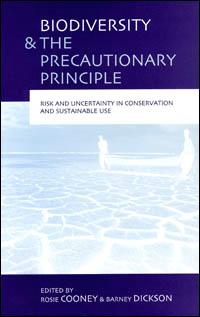Biodiversity and the precautionary principle : risk and uncertainty in conservation and sustainable use

Editor(s):
Publisher:
Great uncertainty typically surrounds decisions and management actions in the conservation of biodiversity and natural resource management, and yet there are risks of serious and irreversible harm for both biodiversity and the humans that rely on it. The Precautionary Principle underlies all international conservation efforts and entails acting to avoid serious or irreversible environmental harm, despite lack of scientific certainty as to the likelihood, magnitude or cause of harm. This book, the first to examine the application of the Precautionary Principle to conservation, analyses how it has been applied in the management of biodiversity, including the impact on forests products and aquaculture, as well as wildlife and livelihoods. The book also examines how power, equity and science intertwine in the Principle. Evidence is drawn from a vast range of countries and the book provides guidelines for applying the Precautionary Principle in all international contexts for the conservation and sustainable management of biodiversity and natural resources.
Includes bibliographic references
Broad subject:
Call number:
Record updated: 2023/09/26
